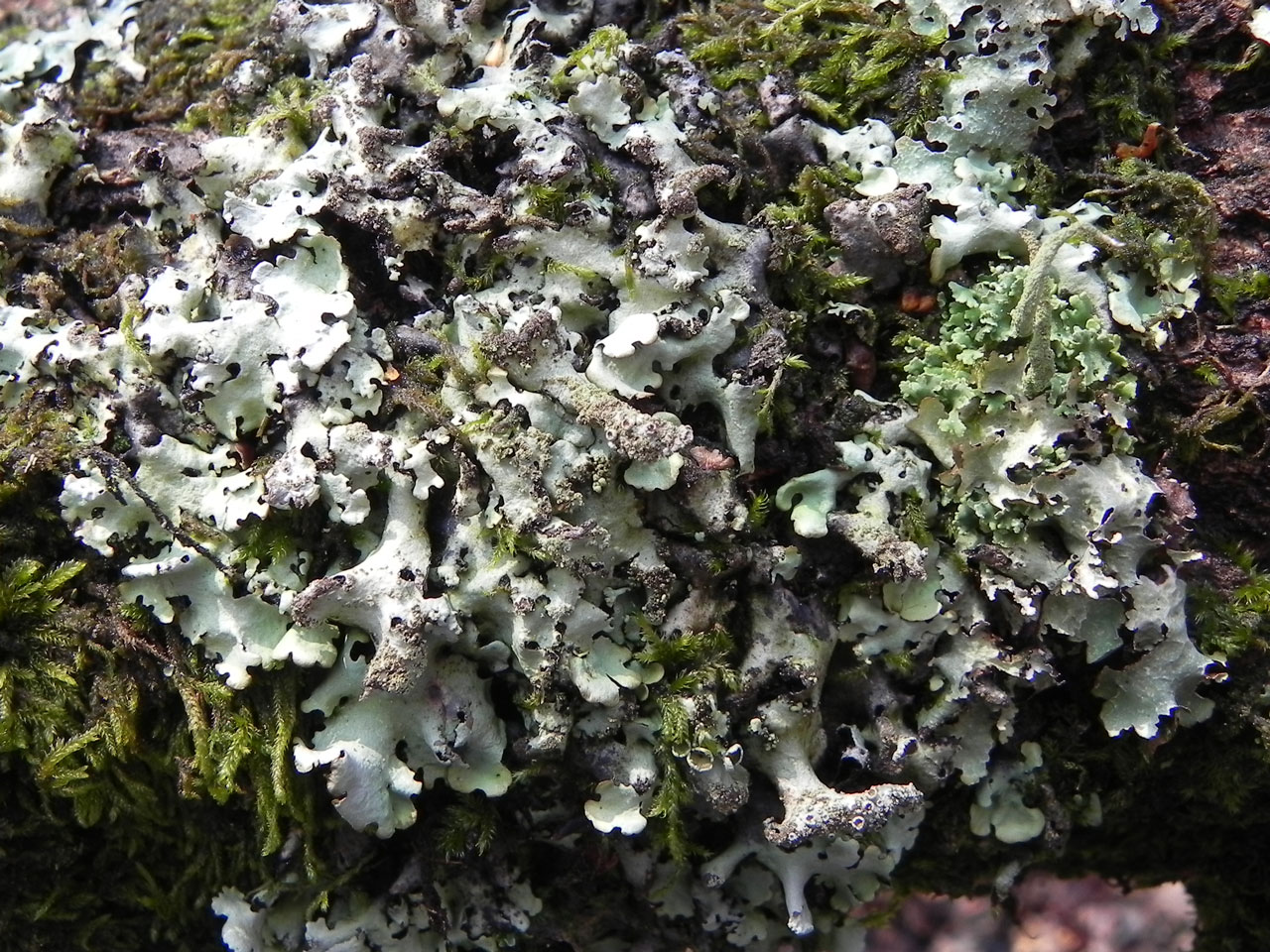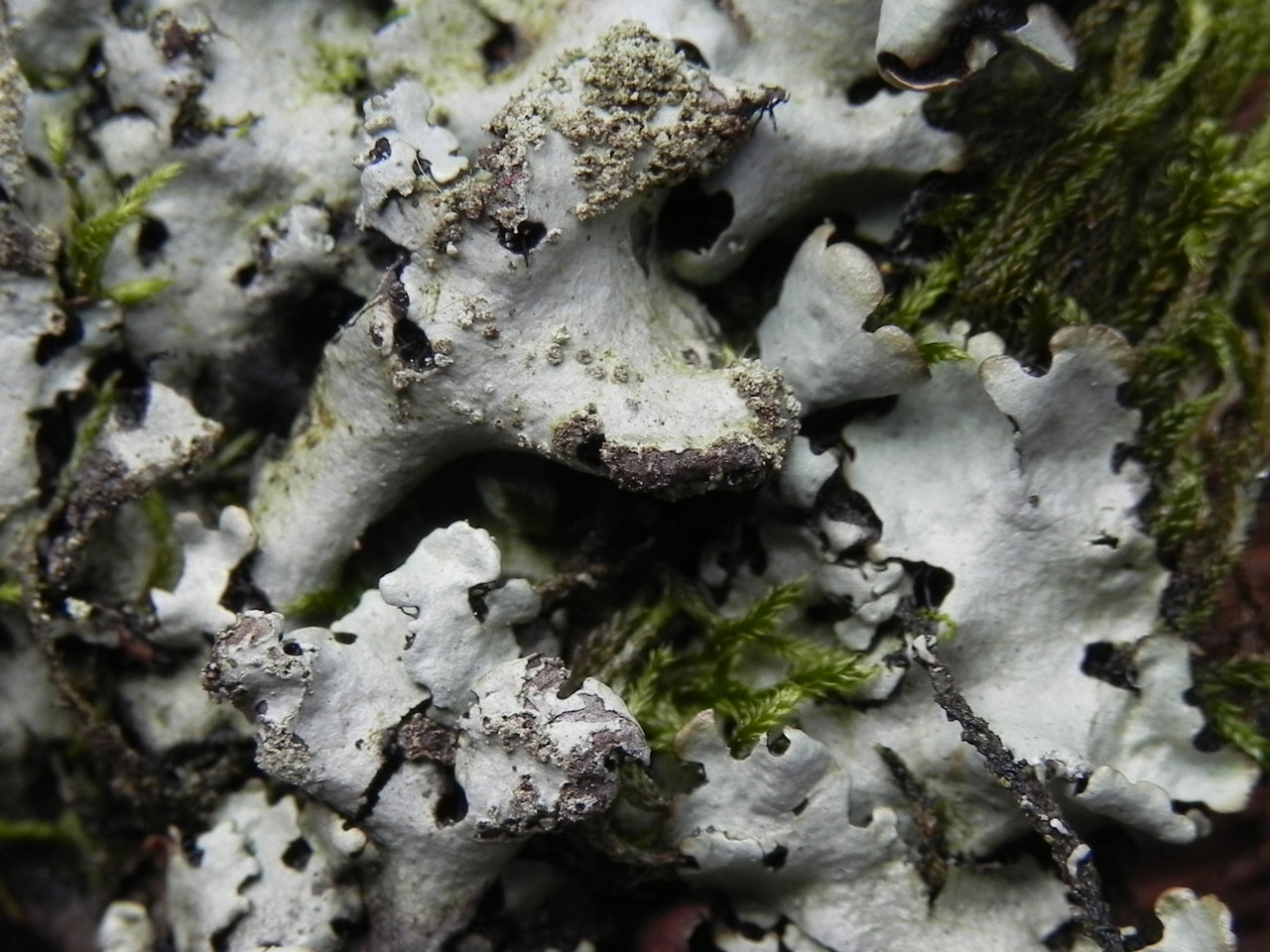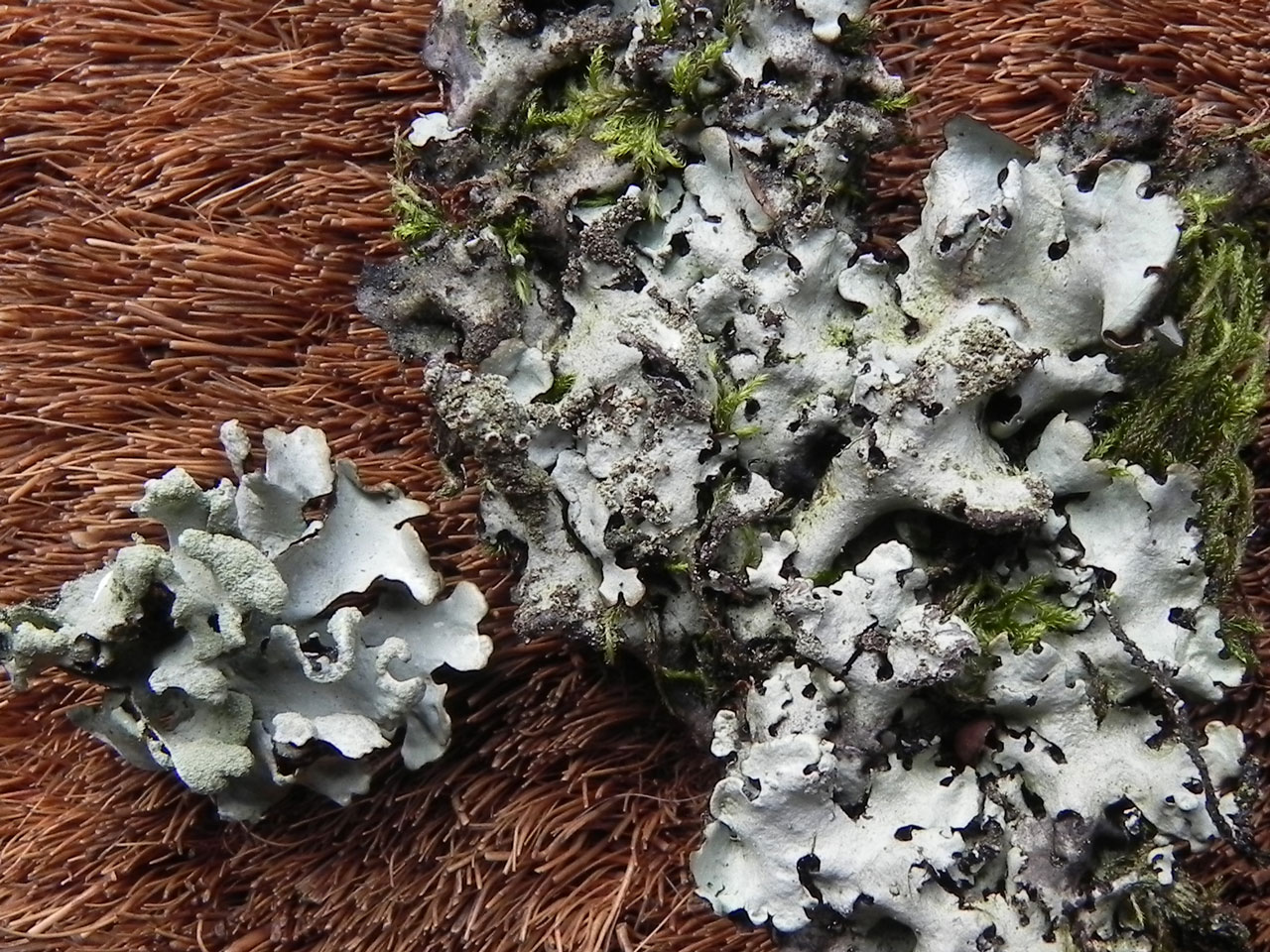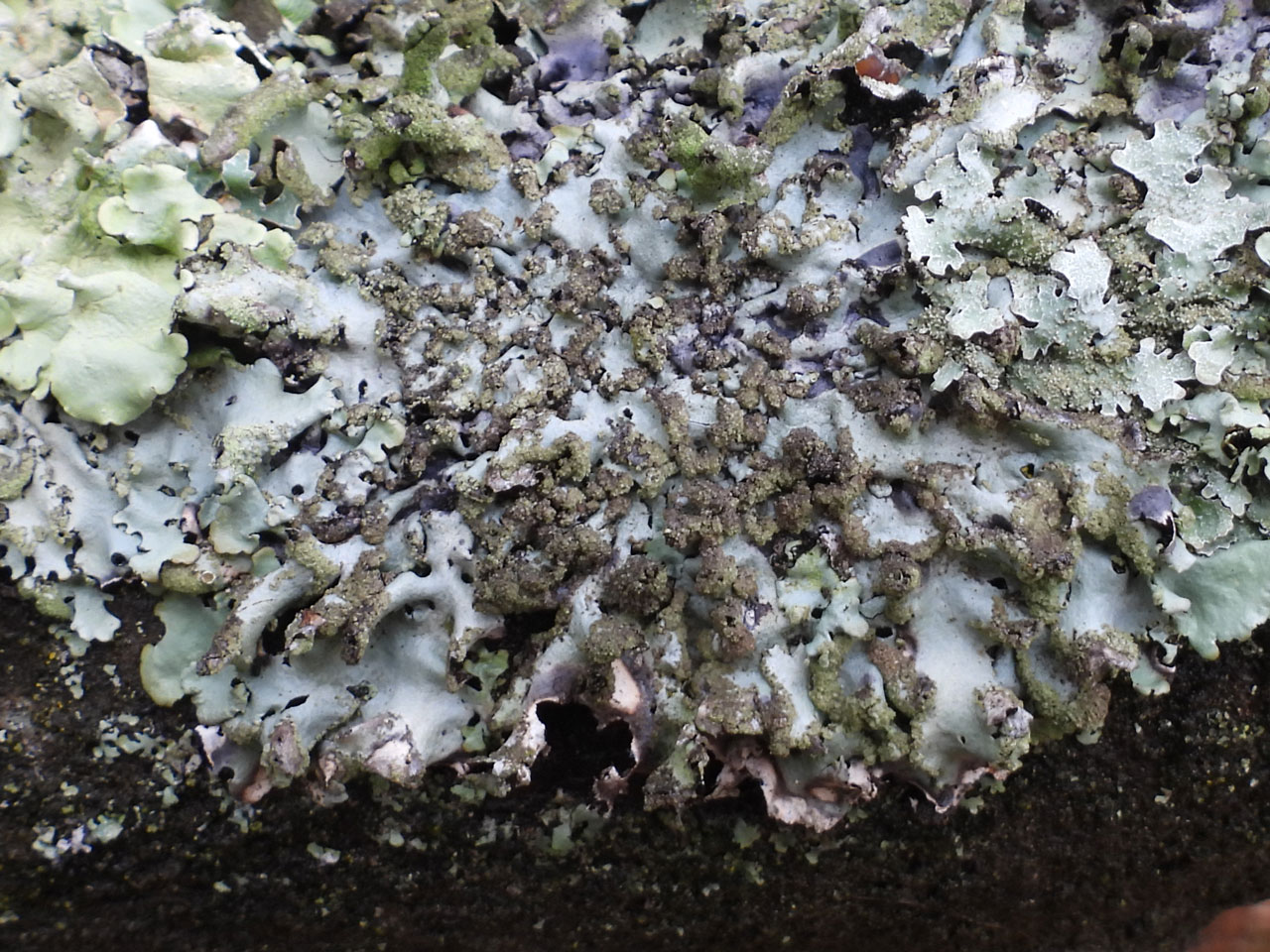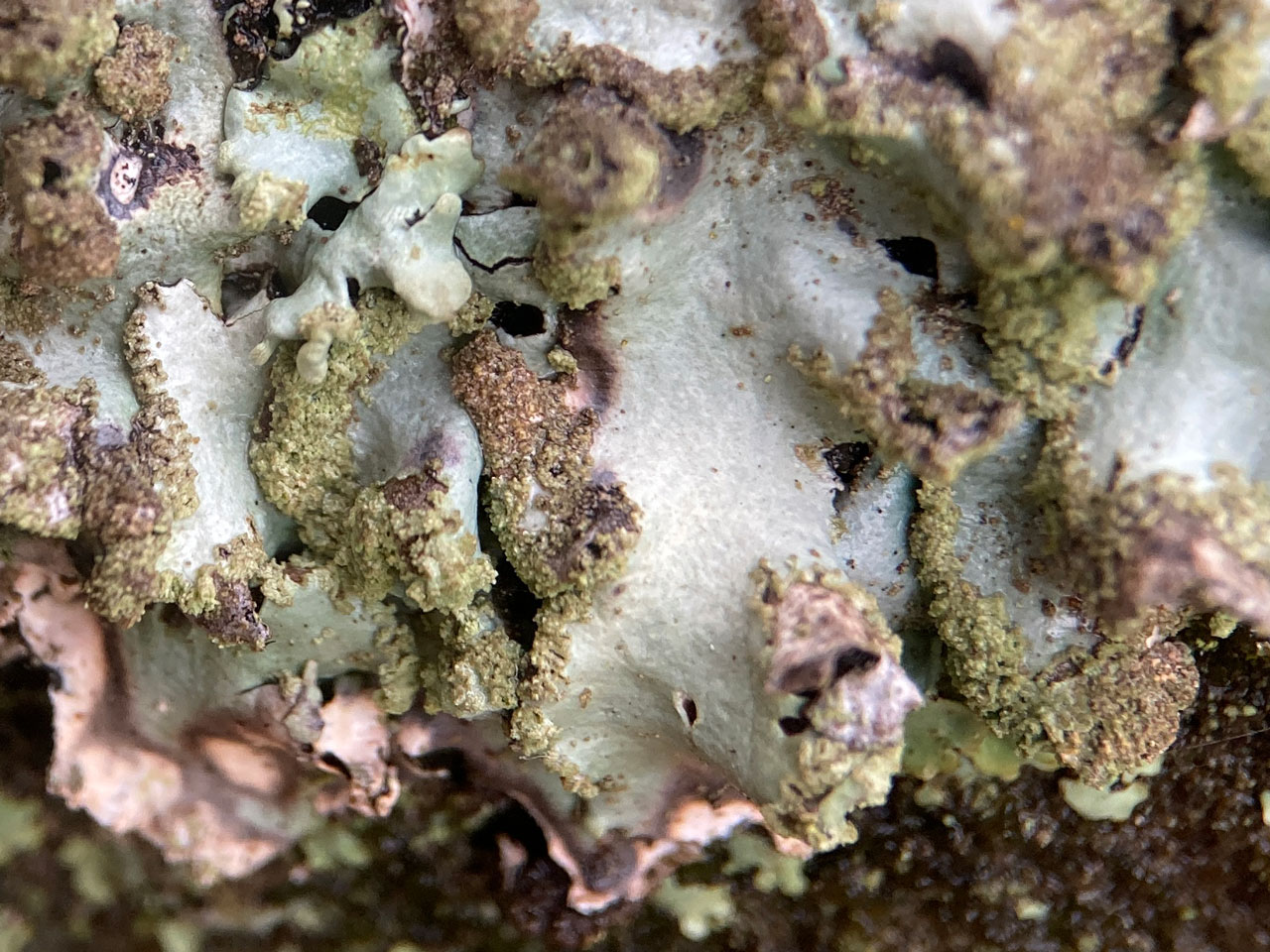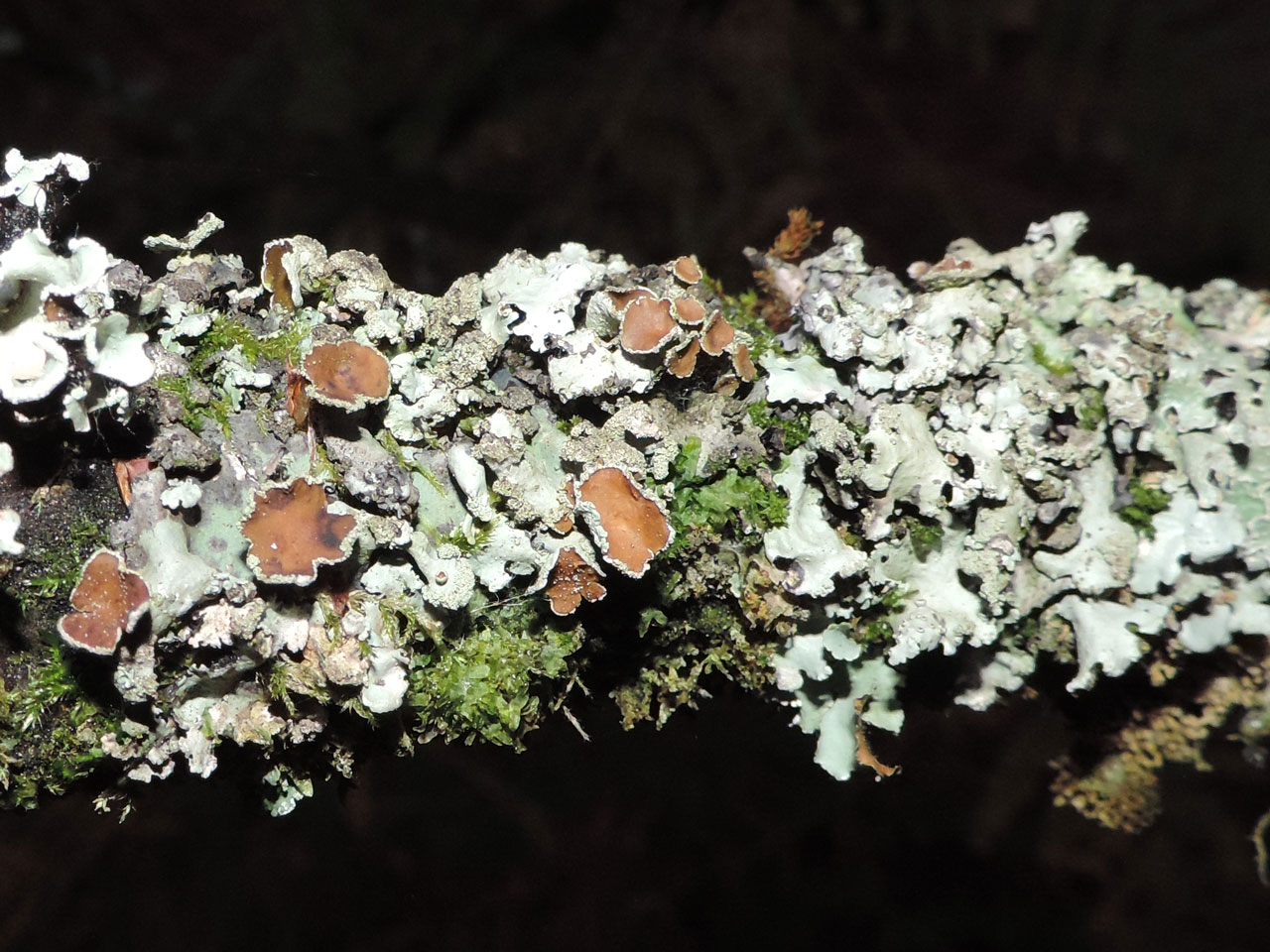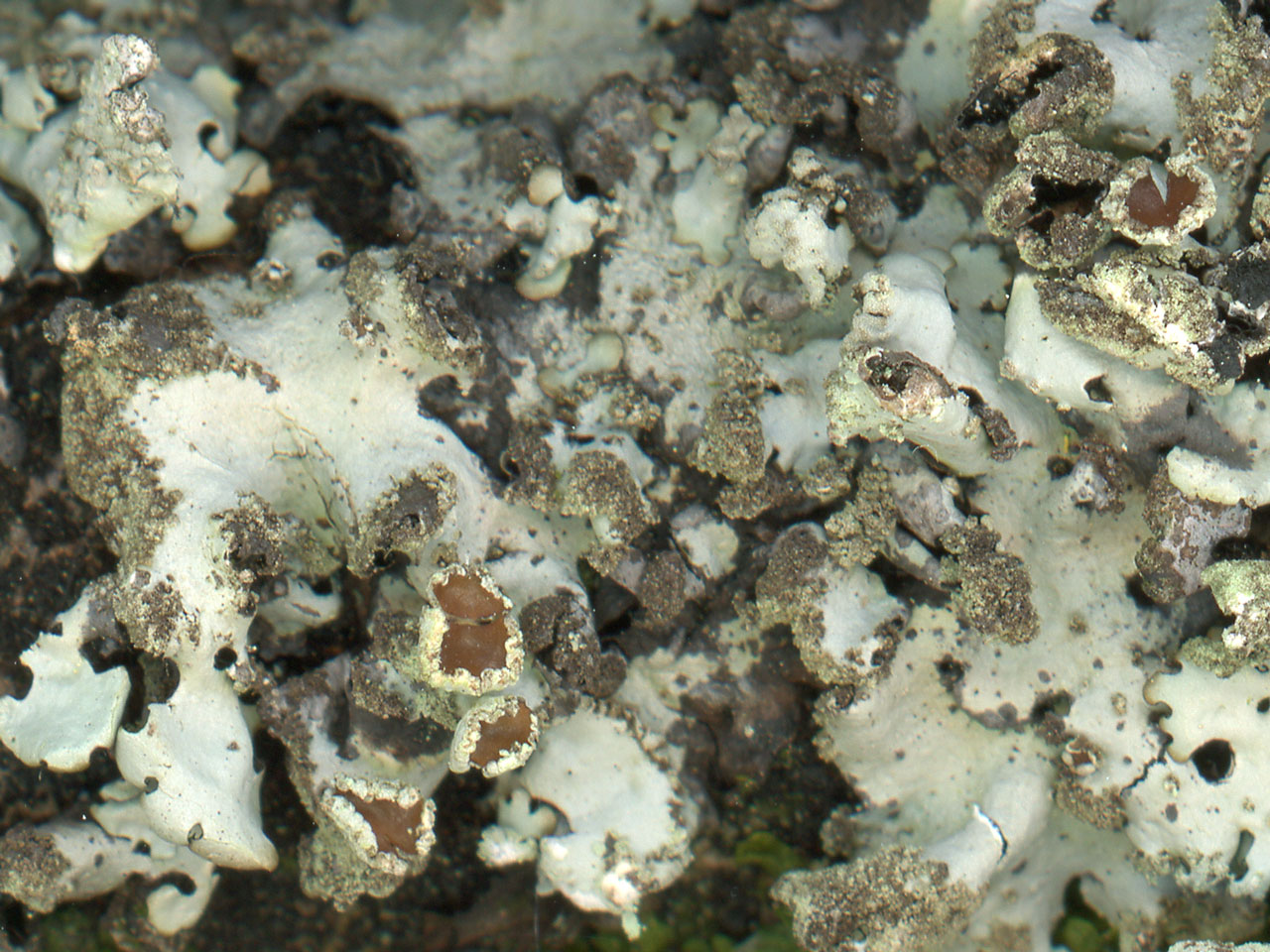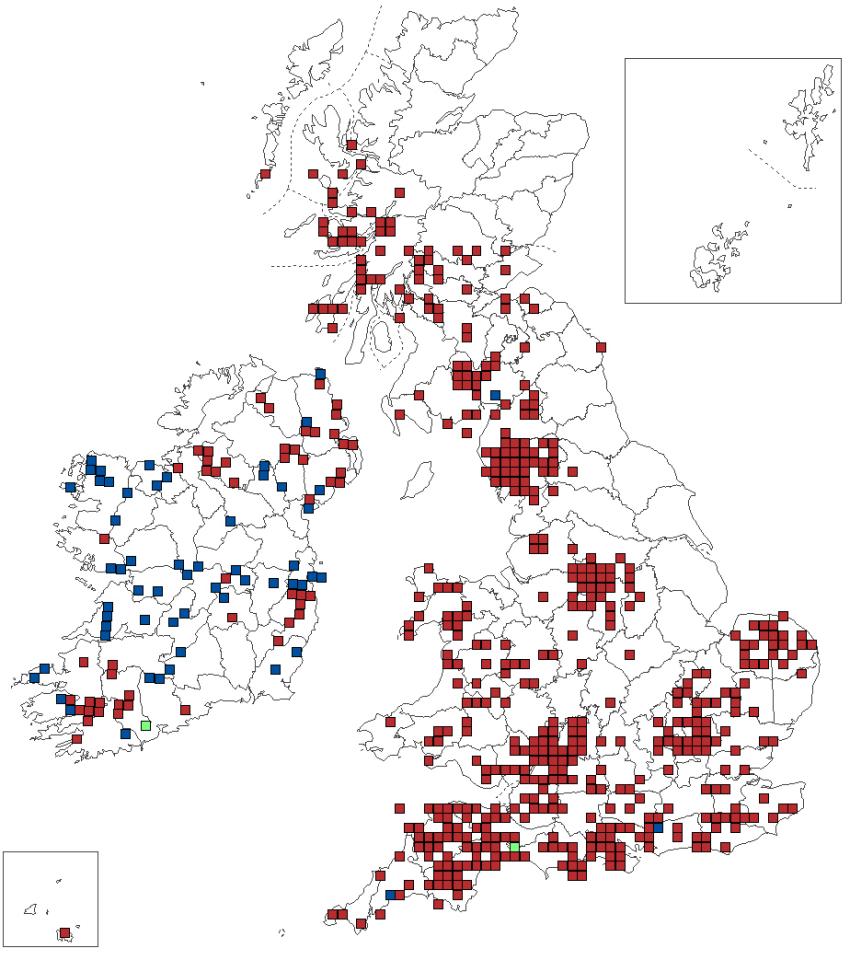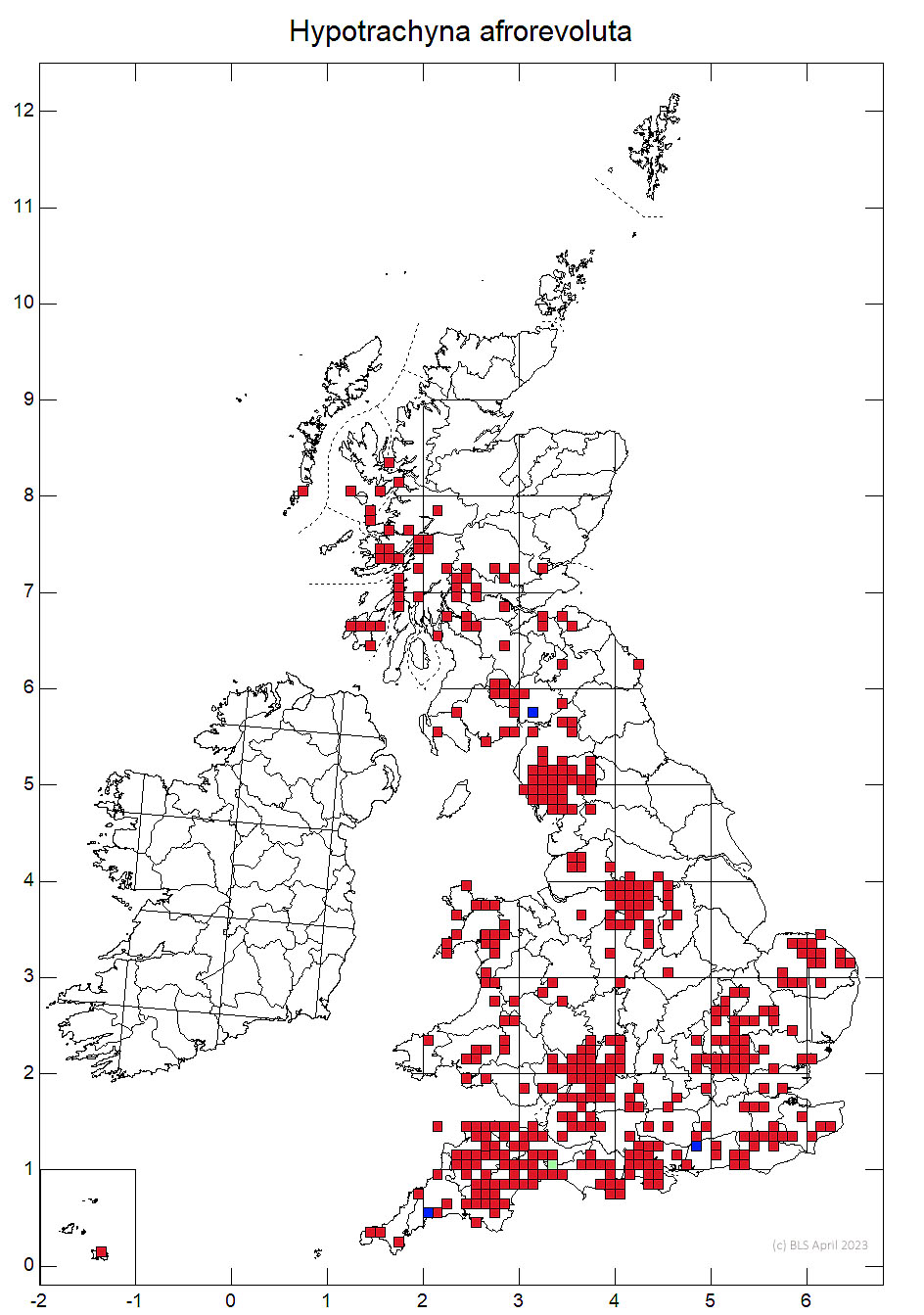Hypotrachyna afrorevoluta
Parmelia afrorevoluta
Parmelia revoluta auct. p.p.
A common and widespread lichen distinguished from Hypotrachyna revoluta quite recently. It is similar to this species but with marginal lobes that are not raised, and with pustulate soralia derived from break-up of the upper cortex. Hypotrachyna afrorevoluta tends to be more common in oceanic areas and on rock, and H. revoluta on trees in eastern districts with higher nitrogen deposition.
Similar to Hypotrachyna revoluta but with marginal lobes that are not raised, and with pustulate soralia derived from break-up of the upper cortex. The soredia can be concolorous with the thallus but are variable and range to greenish to brown, and are larger and more granular than those in H. revoluta. The undersurface is black as in H. revoluta and, as it lacks distinct lobes there are no large pale areas on the undersurface. The rhizines may be somewhat more strongly pigmented.
This taxon has not been distinguished from H. revoluta until quite recently and they are often found together. Both H. afrorevoluta and H. revoluta have been demonstrated to be polyphyletic (Lendemer & Allen 2020), and European material identified as H. afrorevoluta occupies a different clade to tropical collections that may be assumed to be H. afrorevoluta s. str. A full revision of the species complex is needed. Only identifiable when mature, with the soralia well developed, younger material is not distinguishable from H. revoluta s. str. or even the isidiate H. minarum.
Common on bark of wayside and woodland trees and shrubs, more rarely on weakly acidic rocks and walls in inland and maritime situations. As defined here, H. afrorevoluta auct. br. tends to be more common in oceanic areas and on rock, and H. revoluta on trees in eastern districts with higher nitrogen deposition.

Widespread and common, but absent in sub-oceanic areas of N.E. Scotland
Cannon, P., Divakar, P., Yahr, R., Aptroot, A., Clerc, P., Coppins, B., Fryday, A., Sanderson, N. & Simkin, J. (2023). Lecanorales: Parmeliaceae, including the genera Alectoria, Allantoparmelia, Arctoparmelia, Brodoa, Bryoria, Cetraria, Cetrariella, Cetrelia, Cornicularia, Evernia, Flavocetraria, Flavoparmelia, Hypogymnia, Hypotrachyna, Imshaugia, Melanelia, Melanelixia, Melanohalea, Menegazzia, Montanelia, Nesolechia, Parmelia, Parmelina, Parmeliopsis, Parmotrema, Platismatia, Pleurosticta, Protoparmelia, Pseudephebe, Pseudevernia, Punctelia, Raesaenenia, Tuckermannopsis, Usnea, Vulpicida and Xanthoparmelia. Revisions of British and Irish Lichens 33: 1-98.
Lendemer, J.C. & Allen, J.L. (2020). A revision of Hypotrachyna subgenus Parmelinopsis (Parmeliaceae) in eastern North America. Bryologist 123: 265–332.
Text by N A Sanderson, based on Cannon et al (2023)
